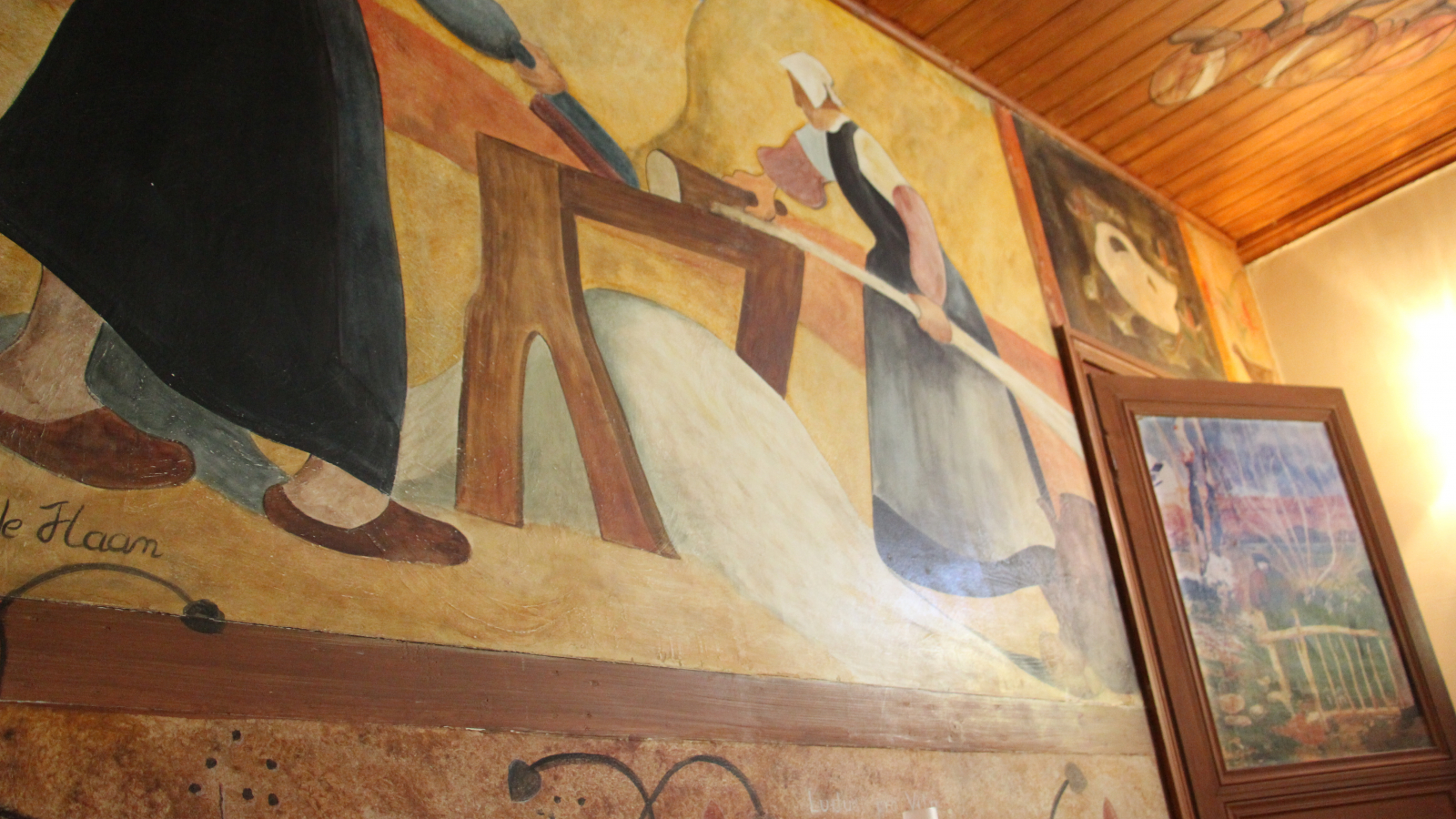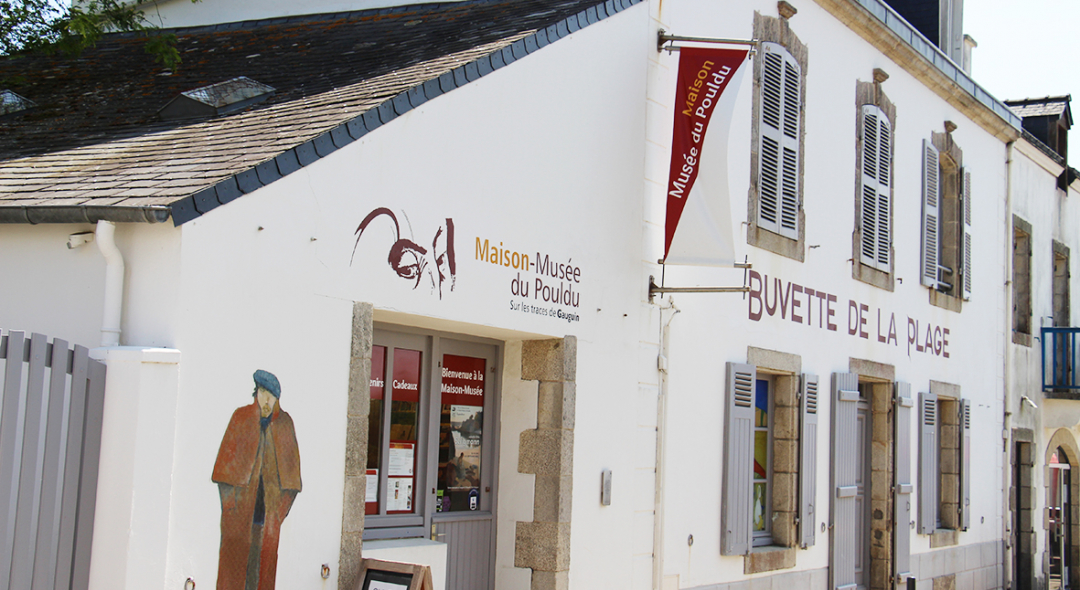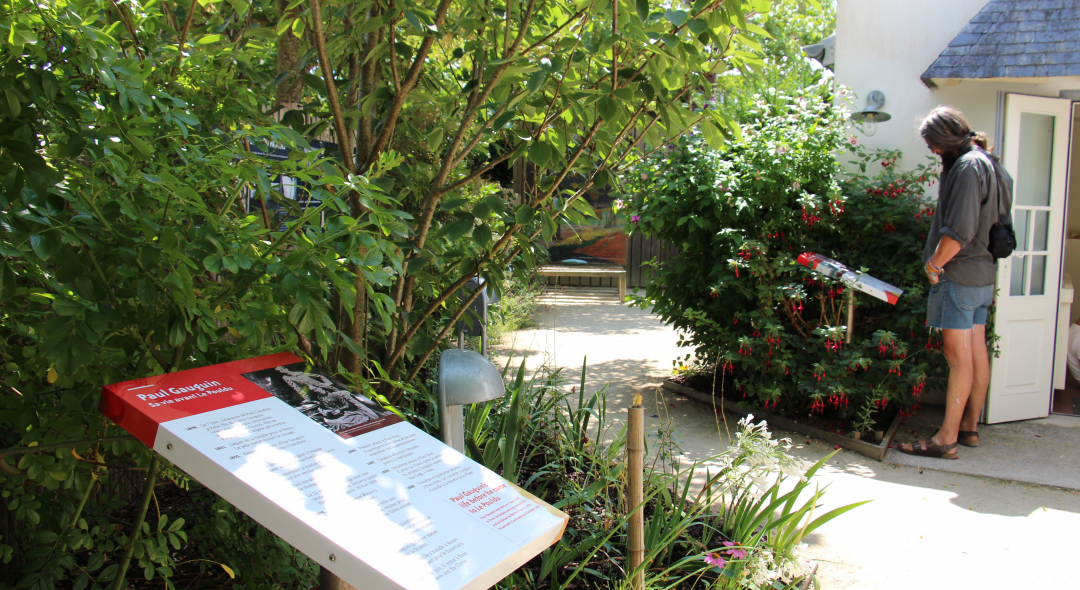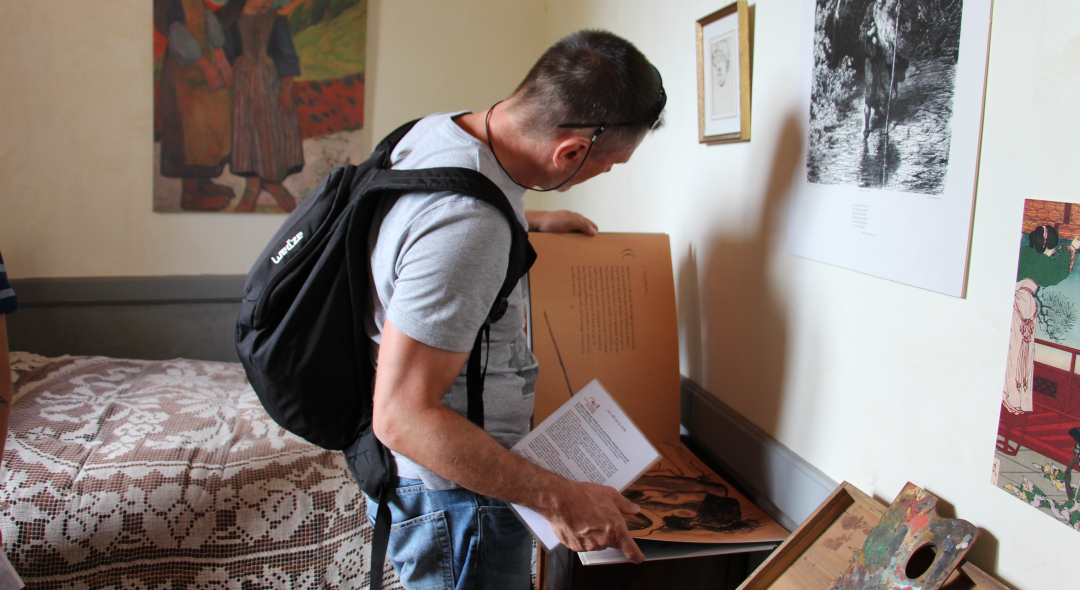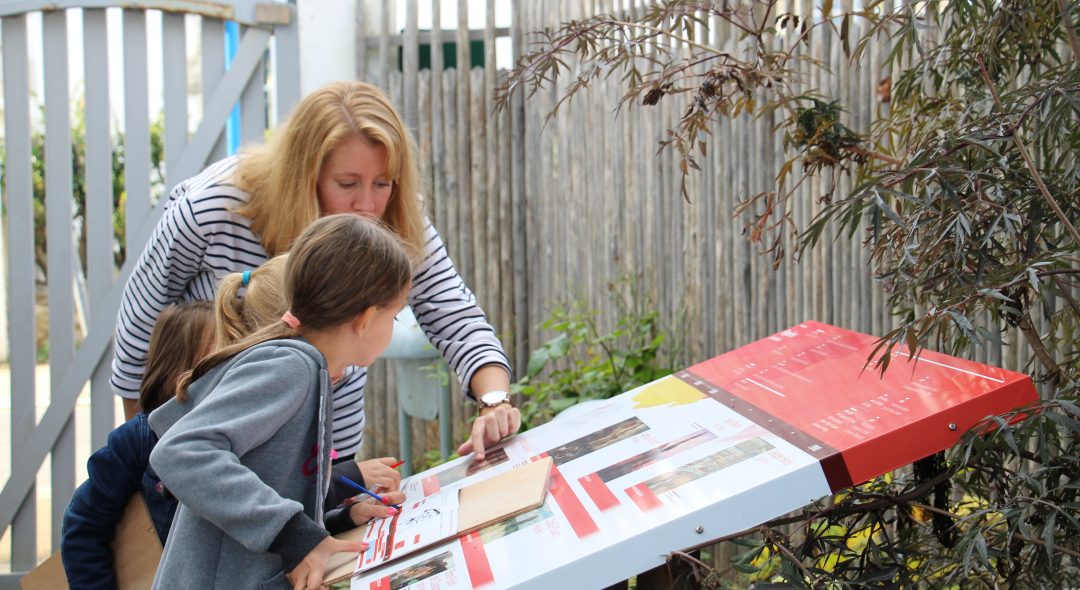Paul Gauguin, a star in Le Pouldu
It was in the autumn of 1889 that the first painters settled in the inn run by Marie Henry called "La buvette de la plage". Paul Gauguin, Meyer de Haan, Paul Sérusier and then Filiger came here in search of a quiet, unspoilt spot far from the hustle and bustle of Pont-Aven.
At the time, Le Pouldu was nothing more than a remote seaside village, rarely visited by the wealthy bourgeoisie who preferred the more famous seaside resorts of Brittany. It was a place conducive to creation, where time seemed to stand still. Inspired by the elements and the people of Le Pouldu, the artists spent the winter painting the walls, ceilings, doors and windows of Marie Henry's little boarding house. It was an exceptional setting that gave rise to a new artistic movement: synthesism. Among the finest works was Gauguin's "L'oie", painted directly onto the plaster in the dining room.
Although he did not achieve such recognition during his lifetime, Paul Gauguin is one of the major French painters of the 19the century and one of the most important precursors of modern art.

Born in the neighbouring commune of Moëlan-sur-Mer, Marie Henry (1859-1945) began her working life in Paris as a domestic servant around 1882. She moved to Le Pouldu in 1887 and started work at the Buvette de la Plage in 1888, where she became owner and manager. The area was ideal for opening an inn, as there were many men and women collecting sand and seaweed, which was used to protect the fields. A meal, or even a room, at this inn will give you a chance to rest before you start your hours-long journey.
She welcomed the painters of the Pont-Aven School from autumn 1889 to autumn 1890. One of them, Meijer de Haan, became her lover and she had a daughter, Ida. After their departure, Marie Henry kept several of Paul Gauguin's works to pay off her debts.
She sold her Buvette in 1911 to live in Kerfany, the commune where she was born, before leaving Brittany for good in 1924 to settle in Pierrefeu-du-Var until her death in 1945.

